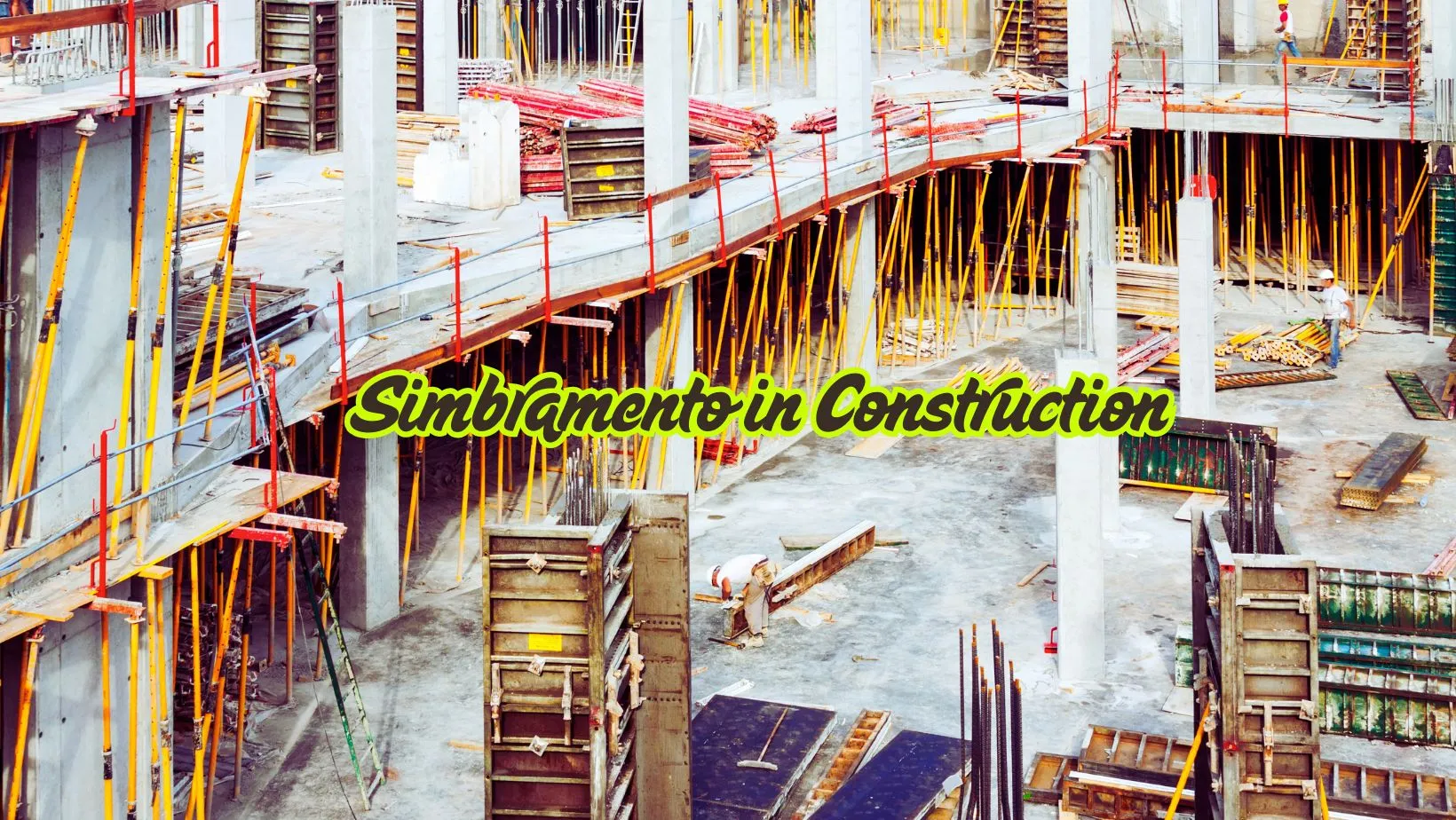Simbramento in Construction The Hidden Backbone of Concrete Structures
In the fast-paced world of Simbramento in Construction, safety and precision are key. One often-overlooked element that plays a vital role in the early stages of any concrete-based project is Simbramento. If you’re new to the term, simbramento refers to a temporary structural support system used to hold horizontal elements like slabs, beams, and arches during concrete curing.
While simbramento might not be a mainstream term outside Portuguese-speaking countries like Brazil and Portugal, it is absolutely essential for ensuring the stability and alignment of structures until they are strong enough to support themselves. From residential buildings to skyscrapers and bridges, simbramento provides the critical strength needed to prevent early-stage collapse or deformation.
This guide offers a complete, easy-to-read breakdown of simbramento, including its types, components, design considerations, and future trends. Whether you’re a civil engineering student, site manager, or construction enthusiast, this article will help you master the fundamentals of simbramento.
What is Simbramento in Construction?
Simbramento in Construction is a temporary support system designed to hold horizontal concrete structures like slabs, beams, and arches in place while they cure. Concrete is naturally weak before it sets, and without proper support, it can sag, crack, or collapse. Simbramento steps in to provide the necessary load-bearing capacity during this vulnerable stage.
Key Functions:
- Prevents structural failure due to concrete weakness before curing
- Maintains accurate alignment of horizontal elements
- Improves jobsite safety
- Increases productivity by allowing other tasks to continue during curing
Where Simbramento is Used
Simbramento is primarily used in:
- Residential construction
- Commercial and industrial buildings
- High-rise towers
- Infrastructure projects like bridges and tunnels
Its ability to provide customized temporary support makes it indispensable in reinforced concrete construction.
Simbramento vs. Escoramento: Understanding the Difference
Though often confused, simbramento and escoramento are not the same.
| Feature | Simbramento | Escoramento |
| Function | Supports horizontal elements | Supports vertical structures |
| Direction | Holds from below | Braces from the side or around |
| Usage | Used during curing | Used to resist loads or prevent shifting |
Both systems often work in conjunction to support a complete structure during its early build stages.
Materials Used in Simbramento Systems
The materials used in simbramento play a crucial role in the system’s durability, weight capacity, and ease of installation. Below are the most common options:
Wood
- Ideal for small-scale or low-budget projects
- Easy to cut and install
- Not very durable; susceptible to wear and moisture
Steel
- High load capacity
- Excellent durability
- Heavier and more costly than wood
Aluminum
- Lightweight and corrosion-resistant
- Great for repetitive use in high-rise construction
- More expensive than timber
Main Components of a Simbramento System
A standard simbramento setup includes several key elements:
Vertical Props (Shoring Posts)
- Transfer the load to the ground
- Come with adjustable heads for uneven terrain
- Include base plates for stability
Transverse Beams
- Divide into primary (main load carriers) and secondary beams
- Spread the load evenly across the formwork
Formwork Interface
- Directly molds the concrete
- Must be securely attached to the beam system
Additional Accessories
- Braces for lateral stability
- Clamps and couplers for safe and rigid connections
Types of Simbramento Systems
Traditional Timber Simbramento
- Affordable and easy to assemble
- Suitable for simple residential projects
- Short lifespan, not ideal for reuse
Steel Simbramento
- Offers exceptional strength
- Handles high structural loads
- Ideal for heavy-duty projects
Aluminum Simbramento
- Lightweight, easy to move and reassemble
- Common in tower and high-rise construction
- Higher initial cost but reusable
Modular Systems
- Pre-engineered with standard components
- Allow faster setup and dismantling
- Safer and more consistent than traditional systems
Climbing or Sliding Simbramento
- Used in skyscrapers and bridges
- Move vertically with the structure
- Reduces the need for reinstallation at each level
Engineering and Design Considerations
Proper design is essential to ensure simbramento performs its function safely and effectively. Here’s what engineers consider:
Load Requirements
- Must support the weight of fresh concrete, workers, and formwork
- Consider dynamic loads like vibration or shifting
Deflection Control
- Beams must be spaced to avoid sagging
- Excessive deflection can cause cracks or misalignment
Ground Stability
- The soil must support point loads from vertical props
- Spreader plates may be needed on soft ground
Precision and Leveling
- Uneven simbramento can lead to tilted slabs or beams
- Use laser leveling tools for accuracy
Material Selection
- Based on load capacity, reuse potential, and budget
- Use BIM (Building Information Modeling) to simulate stress and placement
How to Install and Remove Simbramento
Installation Process
- Prepare the ground: Level and compact soil
- Erect vertical supports: Use adjustable props with base plates
- Install transverse beams: Connect main and secondary beams
- Attach formwork: Secure molds to beams
- Inspect setup: Confirm alignment, strength, and safety
Removal (Desformwork) Process
Wait for concrete to achieve 70–100% of design strength
Remove side elements first, then vertical props
Inspect the slab for cracks or visible deformities
Simbramento Safety Protocols
Safety cannot be overstated when it comes to working with simbramento. Follow these practices:
Only trained personnel should handle assembly
Conduct daily inspections for alignment and joint integrity
Use PPE (Personal Protective Equipment) at all times
Avoid overloading the system at any phase
Ensure compliance with national standards like NR-18 in Brazil or OSHA guideline.
Common Challenges and How to Solve Them
Misalignment
- Fix: Use laser levels and manual inspections during setup
Material Failure
- Fix: Inspect reused wood or corroded steel for damage
Rushing Desformwork
- Fix: Follow strength tests—not project deadlines—for removal timing
Unstable Ground
- Fix: Add spreader plates or recompact the soil
Future Trends in Simbramento
As the construction industry continues to evolve, simbramento systems are also seeing technological upgrades.
BIM Integration
Offers 3D simulation for better placement and load analysis
Smart Sensors
Provide real-time alerts for shifting props or excessive loads
Eco-Friendly Materials
Use of recycled aluminum and certified wood to reduce the carbon footprint
Prefabricated Units
Factory-built props and beams save time and reduce installation errors
Simbramento in Brazil and Portugal
In Brazil and Portugal, simbramento is not just a technique—it’s a standard construction practice. Most projects in these regions rely heavily on modular systems, especially in urban construction. Compliance with local standards such as NR-18 ensures that safety and quality are never compromised.
Conclusion
Simbramento in Construction might not be glamorous, but it is a cornerstone of safe and efficient concrete construction. It quietly holds up the most critical parts of a building until they are ready to stand on their own. Whether you’re managing a large commercial project or a small residential build, understanding simbramento can dramatically reduce risk, improve quality, and enhance workflow.
By staying updated with trends like BIM modeling, smart monitoring, and eco-materials, you can ensure your simbramento setup is not just effective—but also future-ready.







